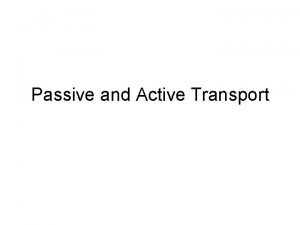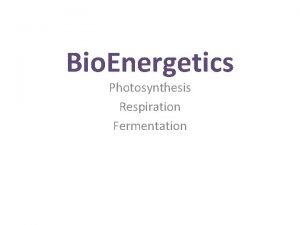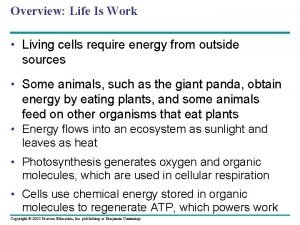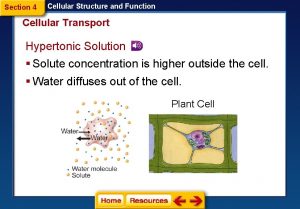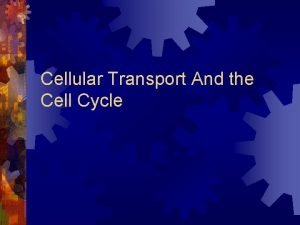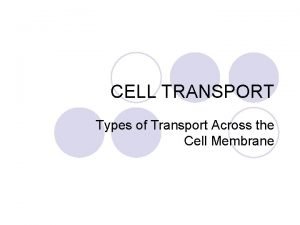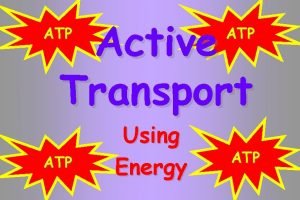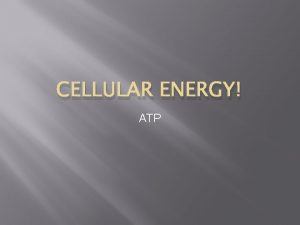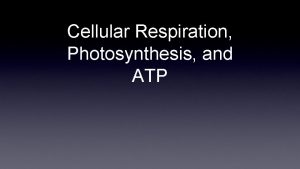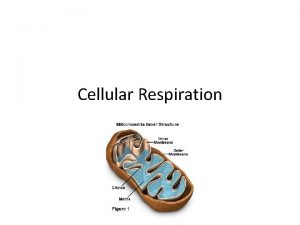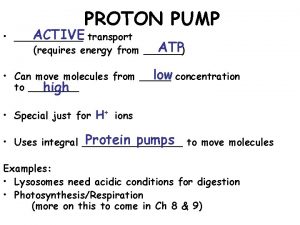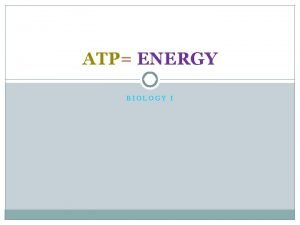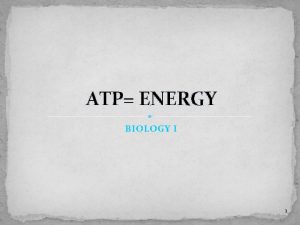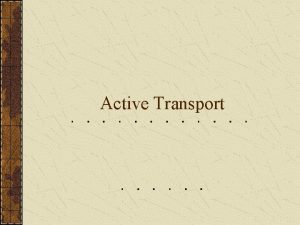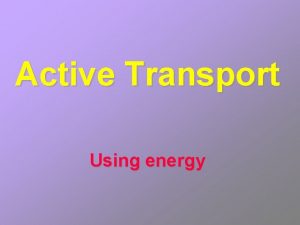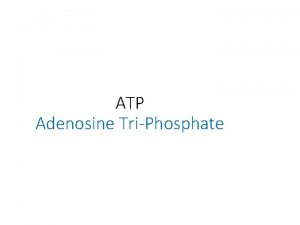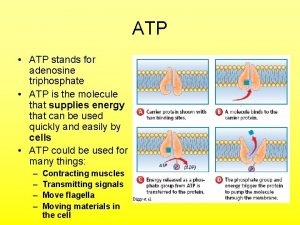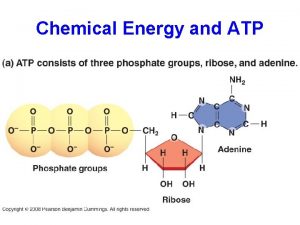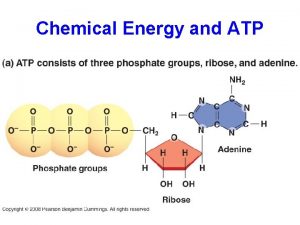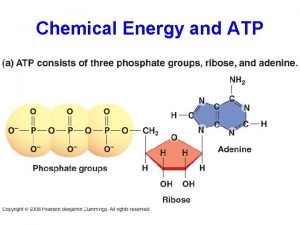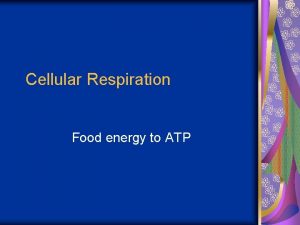Active Cellular Transport Requires energy cellular energy ATP

















- Slides: 17

“Active” Cellular Transport • Requires energy • cellular energy = ATP • Moves materials from LOW to HIGH concentration • Works AGAINST concentration gradient

Three Types of Active Transport 1. Membrane Pumps 2. Endocytosis (pinocytosis and phagocytosis) 3. Exocytosis

1. Membrane Pumps • Against gradient • Uses transport proteins • Specific binding sites • Activated by ATP

The Membrane Pump • ATP activates protein • Molecules bind • Transported to other side • Protein returns to original shape

Membrane Pumps Example Sodium-Potassium Pump Na+ (sodium ions) are pumped out and K+ (potassium ions) are pumped in against strong concentration gradients. 5

Sodium-Potassium Pump 3 Na+ are pumped in for every 2 K+ pumped out (both AGAINST the gradient). Creates a membrane potential 6 and regulates cell volume

2. Endocytosis • Uses energy to form a vesicle by folding the membrane inward • Moves food, large amounts of water, and other molecules to the inside of the cell

Receptor-Mediated Endocytosis Some integral proteins have receptors on their surface to recognize & take in hormones, cholesterol, etc. 8


Two Types of Endocytosis Eating (Phagocytosis) • Takes in food • Uses energy Drinking (Pinocytosis) • Takes in water/liquids • Uses energy

Endocytosis – Phagocytosis Used to engulf large particles such as food, bacteria, etc. into vesicles Called “Cell Eating” 11

12

Phagocytosis - Capture of a Yeast Cell (yellow) by Membrane Extensions of an Immune System Cell (blue) 13

Pinocytosis Most common form of endocytosis 14 Takes in dissolved molecules as a vesicle.

3. Exocytosis Cell expelling wastes Opposite of endocytosis Uses energy, against gradient

Exocytosis The opposite of endocytosis is exocytosis. Large molecules that are manufactured in the cell are released through the cell membrane. Inside Cell environment 16

Review: Types of Transport • Passive – Diffusion – Osmosis – Facilitated diffusion • Active – Membrane pump – Endocytosis • Pinocytosis • Phagocytosis – Exocytosis
 Unlike passive transport, active transport requires *
Unlike passive transport, active transport requires * Primary active transport and secondary active transport
Primary active transport and secondary active transport Primary active transport vs secondary active transport
Primary active transport vs secondary active transport Passive transport
Passive transport Passive transport vs active transport venn diagram
Passive transport vs active transport venn diagram Passive transport vs active transport venn diagram
Passive transport vs active transport venn diagram Bioflix activity membrane transport active transport
Bioflix activity membrane transport active transport Passive trnasport
Passive trnasport Isotonic in biology
Isotonic in biology Formula photosynthesis and cellular respiration
Formula photosynthesis and cellular respiration What is the difference between autotroph and heterotroph
What is the difference between autotroph and heterotroph Total atp produced in cellular respiration
Total atp produced in cellular respiration Total atp produced in cellular respiration
Total atp produced in cellular respiration Electron transport chain cellular respiration
Electron transport chain cellular respiration Tonicity foldable
Tonicity foldable Cellular structure and function section 4 answer key
Cellular structure and function section 4 answer key Cellular transport and the cell cycle
Cellular transport and the cell cycle Cytolysis
Cytolysis



